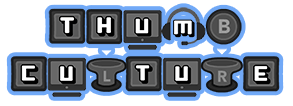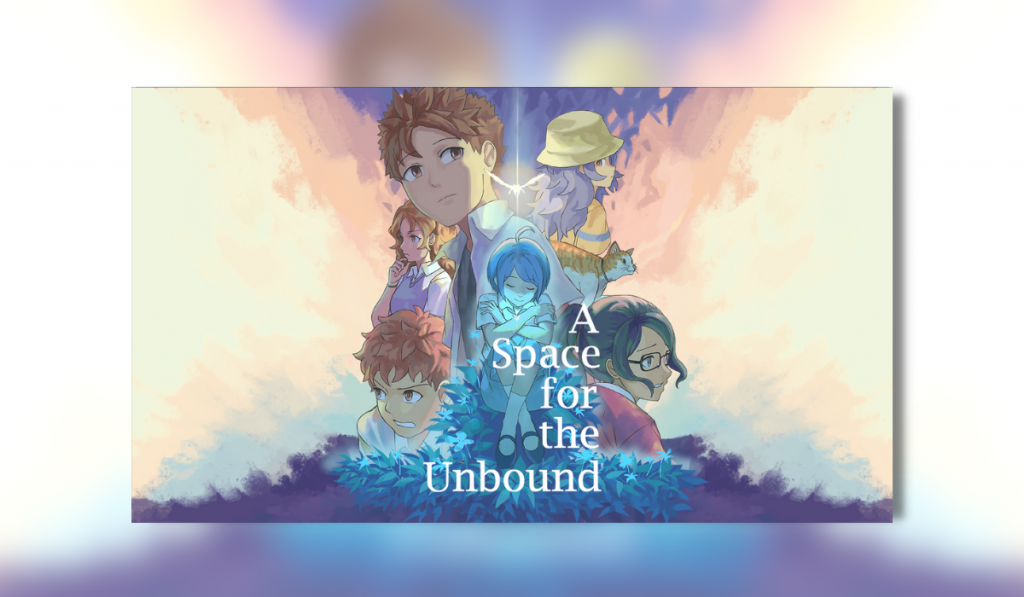
Emotive sojourns are widespread in the indie scene, even beginning to become more prevalent in AAA territory. But rarely do they shed light on a relatively unknown region, be deeply relatable and also mind-bogglingly engrossing all at once. A Space For The Unbound by Mojiken Studio is a side-scrolling pixel art adventure that is both a warm, familiar embrace and a propulsion into a vortex of raw, all-encompassing emotion.
Set in a fictional rural Indonesian town in the ‘90s, you play as protagonist Atma, journeying through high school life with his sweetheart Raya. But humdrum everyday life soon becomes anything but humdrum. Both possess supernatural abilities, Atma is troubled by dreams that feel familiar and a mysterious force threatens their very existence. What follows is a journey of exploration, despair, understanding and hope.
Magic in the Mundane
While the otherworldly elements are running throughout, A Space For The Unbound manages to do what Studio Ghibli does for animated movies: making normality magical. As you guide Atma through the town, exploring its streets and conversing with the locals, it’s unbelievably easy to become completely absorbed in it. You find yourself at home in a place you’ve never visited, the crossing of cultures is so smooth! Discovering local music, comfort food and customs brings light to a rarely explored area of the world while the nostalgic mainstays of arcades, food stalls and internet cafes are universal.
This is also reflected in the small actions Atma takes throughout the journey: making a bucket list with Raya, hands touching at the movies, caring for a stray animal. A familiarity runs through these moments that is immediately warm and often quite amusing. And this throws you even more for a loop when the supernatural comes into play. Just when you’ve reached a nice cosy state of homeliness, you’re sucked back into the surreal. Jarring, but in a way that keeps you firmly invested.
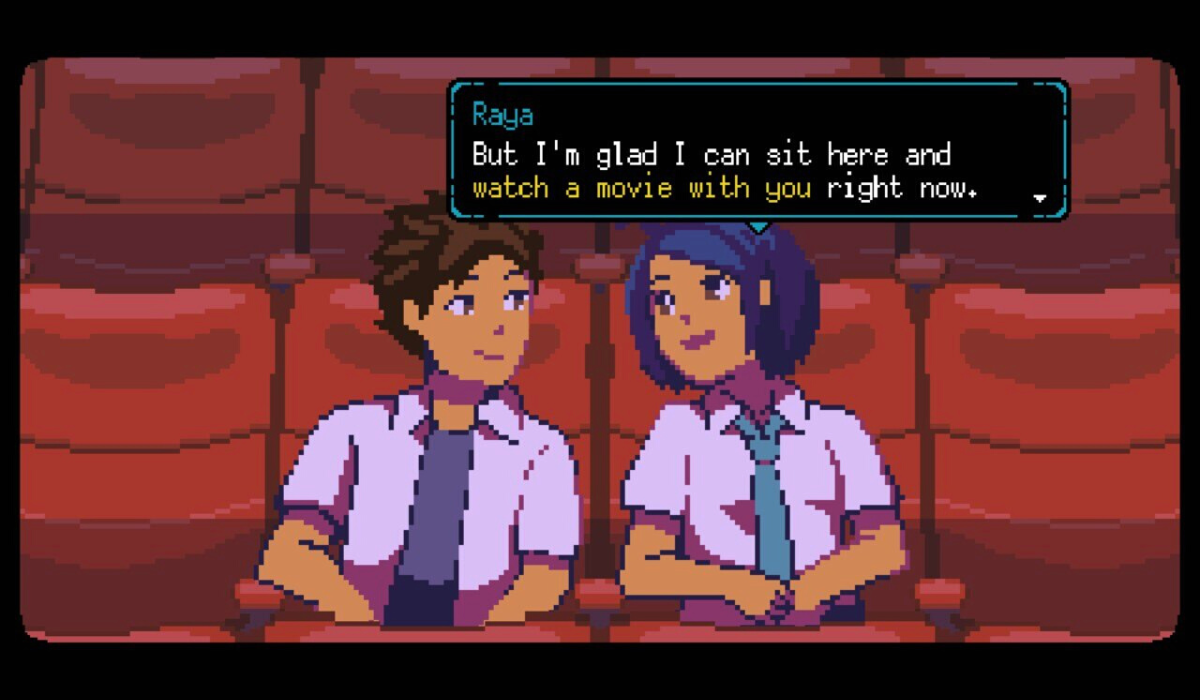
Dive Deep
A core part of gameplay is Atma’s ability to ‘Spacedive’: diving into the minds of others when they are faced with internal conflict. Inception, ‘90s pixel art style. Atma carries a red book that opens a portal to a dream-like manifestation of the person’s mind. Here, Atma can use items and alter events to change the person’s perspective or overcome obstacles. Later things are more complex with portals within portals and many layers of people’s fractured minds. These are among some of the game’s most striking moments. Atma achieves his goals, but his actions carry weight, even in the subconscious. Consequences are always present, good or bad. And it generates more questions about Atma’s role in this story.
There are also collectables scattered throughout the town which are well worth seeking out as this further enhances your connection to Atma and Raya’s hometown. None feel superfluous or tacked on. If you’re a cat lover like me, you’ll get a silly amount of pleasure in seeking out, petting and naming EVERY adorable kitty in town. Even ones that need a little patience.
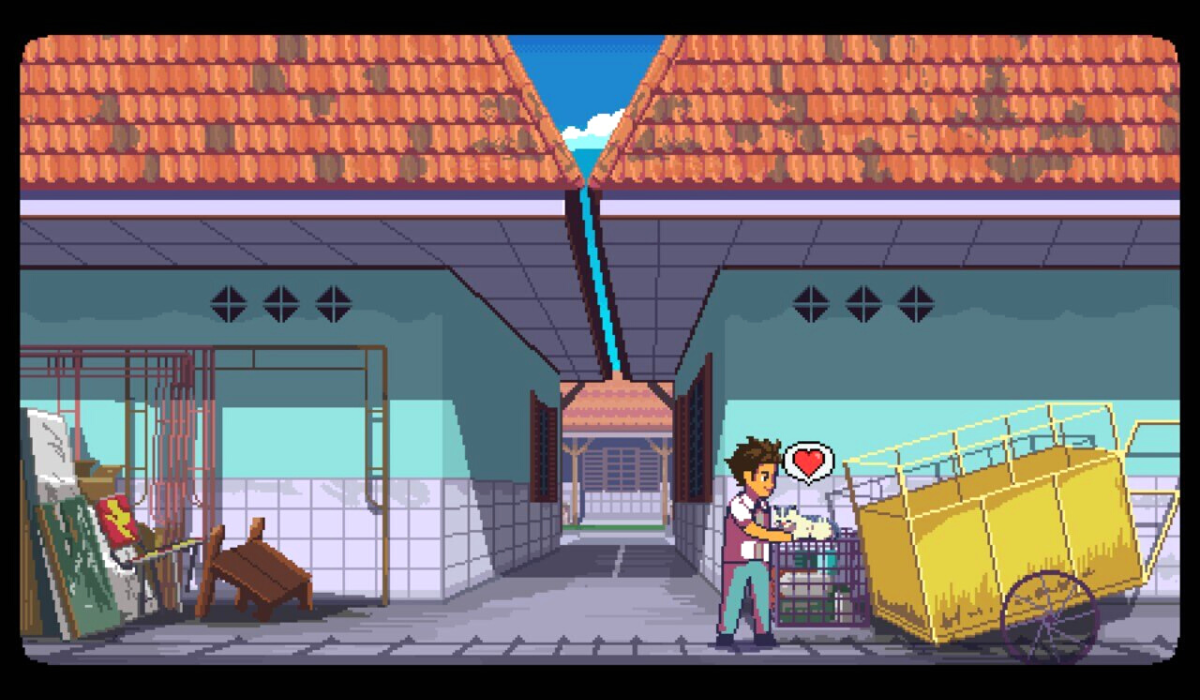
A quirky element that periodically appears is a Street Fighter-reminiscent fighting mechanic, requiring specific button presses and careful timing. Learned from a timeworn ‘Future Fighter’ sensei, Atma uses this technique to get the upper hand in fights. It certainly mixes things up and is entertaining for the most part, but can become a little grating at times. Also while it progresses in difficulty to keep you on your toes, the animation could be a touch more varied to reflect it. But it never grates to the point of frustration and is one of many nods to well-loved franchises and phenomenons.
But ultimately, what emanates through every facet of gameplay is a deep understanding of people. Of how people process emotions and how devastatingly complex and unpredictable they can be. The story is akin to untangling strands of vibrant thread, coming up against perplexing knots and keeping you guessing at every turn. When you think you’ve straightened the strands and figured it out, another complex knot appears. It’s beautifully messy. Nothing is clear cut and black and white. But it only makes you more determined to untangle them and experience every emotion.
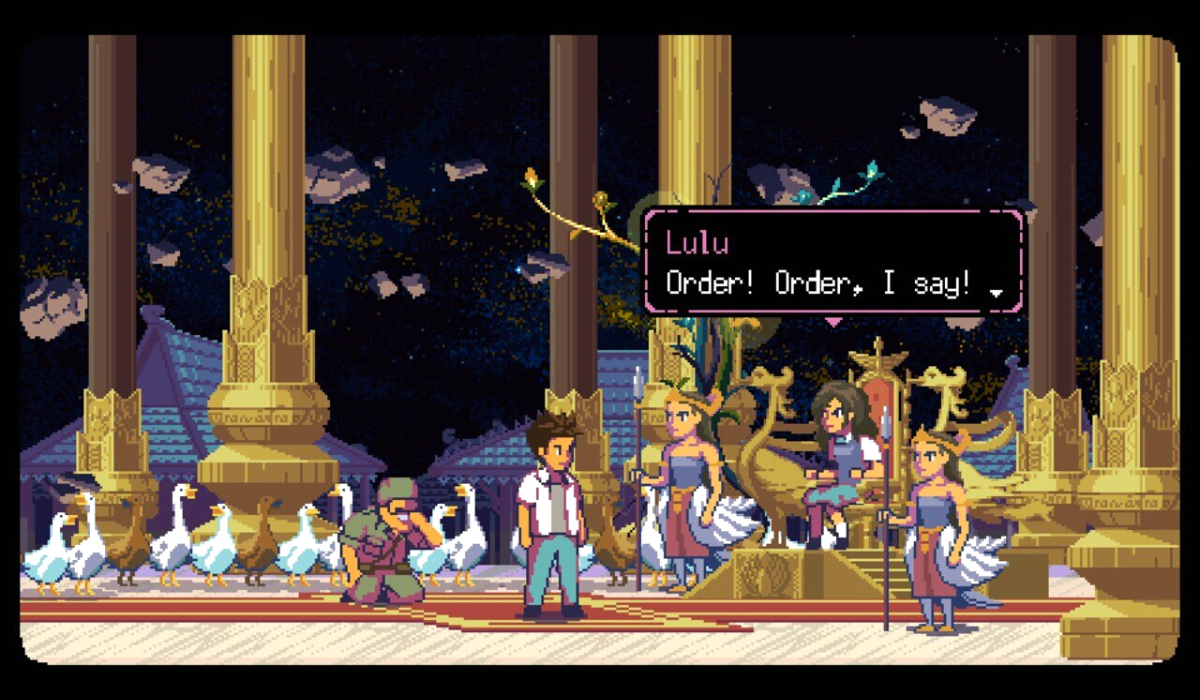
Saying any more would go into some serious spoiler territory, but suffice it to say every emotional beat masterfully hits its mark and hits hard.
Seeing and Hearing is Believing
Mojiken is no stranger to striking visuals, as showcased in When The Past Was Around. A Space For The Unbound is no exception. Trading hand-drawn for pixel art, the scenes are simply stunning with vibrant colour palettes and delightful animation. Inspiration from Japanese filmmaker Makoto Shinkai is proudly weaved into even the most subtle and delicate moments. Anime-like cutscenes beautifully mix static images with snippets of animation and emotion seeps through the screen, even without sound. But without it would certainly do the soundtrack a grave disservice.
As varied and engaging as the story it underpins, every track is a dream In a departure from most scores, the soundtrack also features two full-length songs with lyrics. ‘Within the Dream’ is both a rousing and heartbreaking piece that will leave you an amoeboid weepy mess. ‘An Ode to Life’ is a sparky yet mellow throwback to acoustic ‘90s feel-good tunes. Both are performed by the amazing Christabel Annora whose aetheric vocals are a perfect match for this transcendental tale.
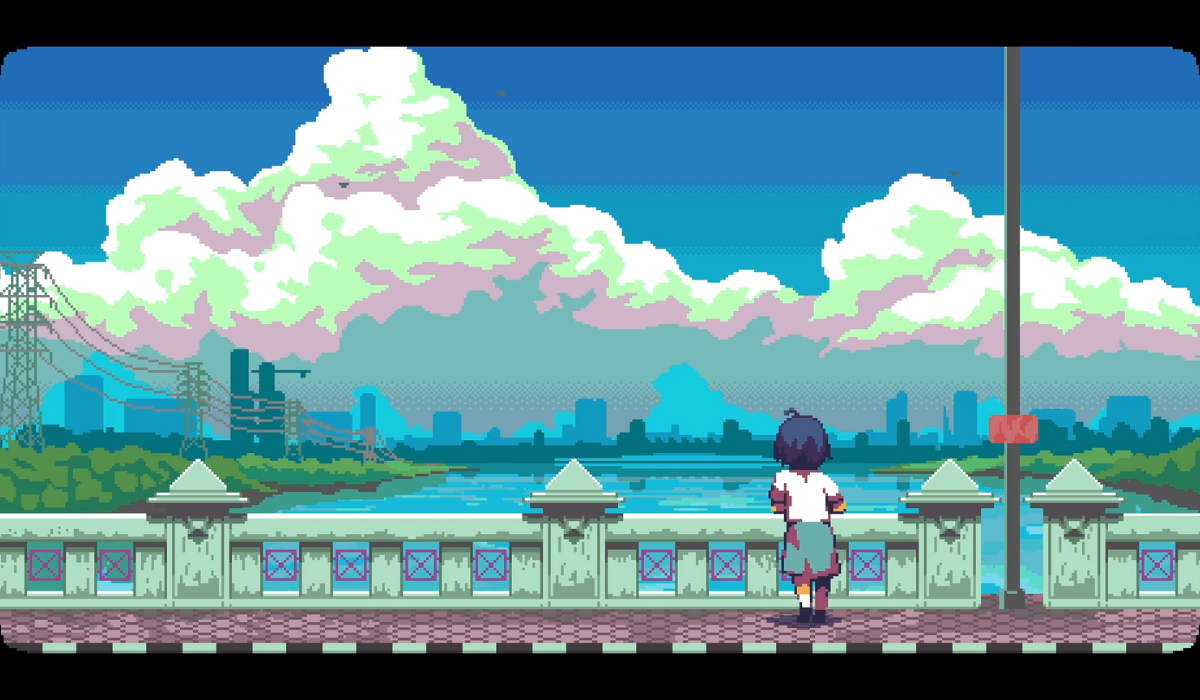
Stay A Little Longer
Even in its runtime, A Space For The Unbound goes above and beyond. While most indie games usually rack up between 4 – 8 hours, this can easily stray into double figures. Players will average around 10 – 12 hours, depending on how long it takes to locate all of the collectables, pet all the kitties or doggedly try to beat Future Fighter’s high score. Certainly befitting the complex, slow-burn narrative, though there are the occasional blips in pacing here and there.
In the first and final acts, some sequences feel a little too drawn out and conversely, a couple of sections which could have been explored more flew by. But even these minor imbalances reflect an adolescent perspective in a way, lingering too long on some things and rushing through others – a millpond then a rushing river.
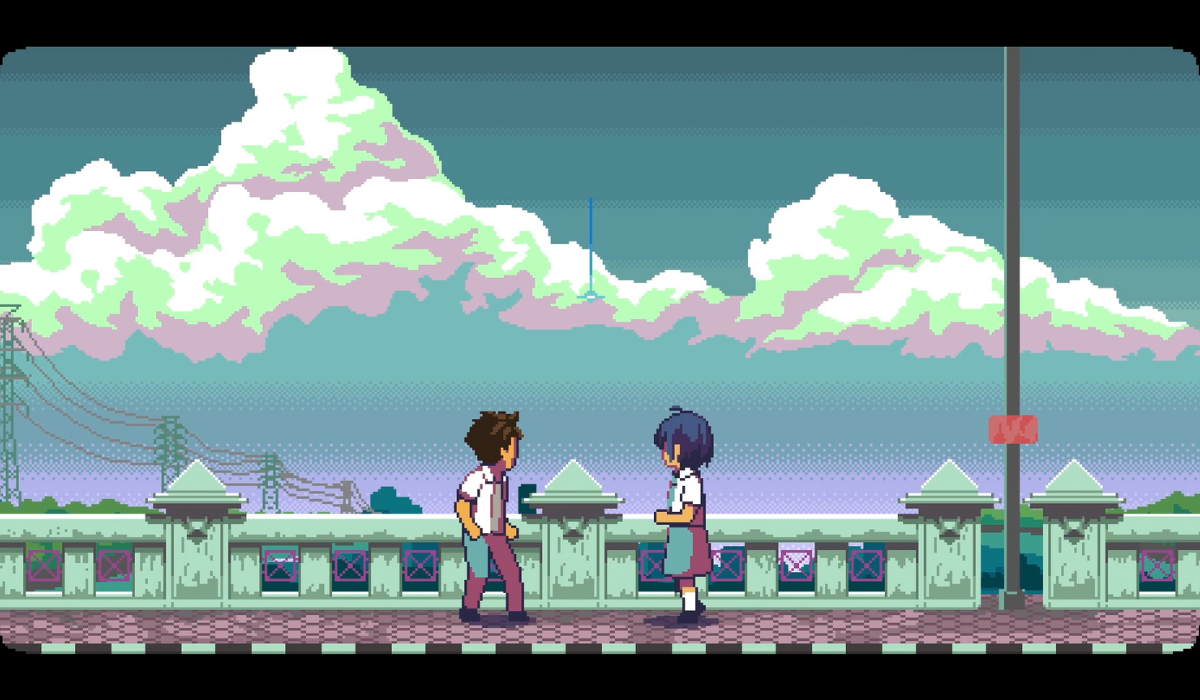
On The Whole
Very rarely does a game make a little-known culture feel familiar to all and also capture the human mind in such a surreal, unexpected way. Profound, personal, warm, homely and harrowingly heartbreaking: all this is A Space For The Unbound. The first ‘big’ project from Mojiken goes as such and has no intention of going home! But you will feel like you have, with the emotions that go along with it.
A Thumb Culture Gold Award for this outstanding adventure!

Disclaimer: A code was received in order to write this review.
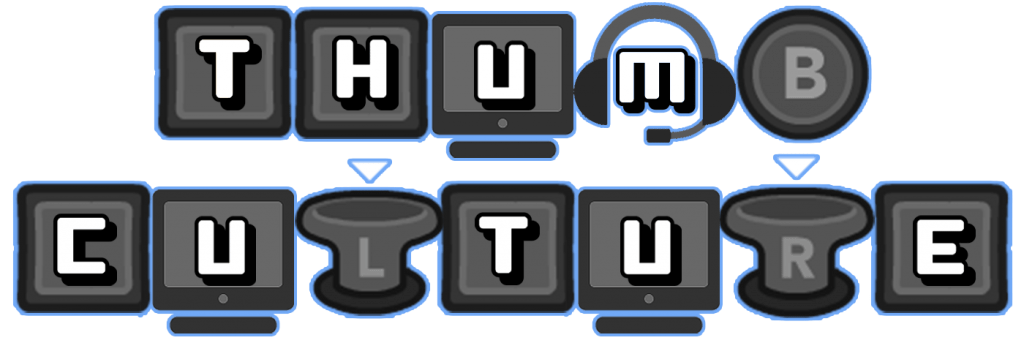
YouTube | Facebook | Twitter | Instagram | Discord | Podcast
